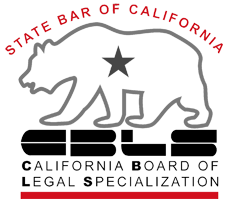How to Move Forward in a California Divorce After Serving Your Spouse
After Serving My Spouse How do I Move Forward in a California Divorce? Understanding the divorce process can be difficult if you do not have a background in law, and making a mistake can be costly. Divorce affects almost every aspect of your life, from your family and friends to your finances and sometimes, your career.
Whether you and your spouse know that you are getting a divorce or you decided on your own, the first step in the divorce process is serving your divorce petition on your spouse. At this point, your spouse will need to find his or her own legal representation and file a response. You and your divorce attorney can work on the next steps from your end even if your spouse has not responded.
What Needs to be Done in a California Divorce?
A divorce is intended to end a marriage or a registered domestic partnership in California. However, people who are married or in a registered domestic partnership tend to have intertwined their finances, debts, property, and other assets, and they may share children. So, when they decide to get a divorce, they will need to separate each of these issues so that two people who once shared will be able to survive on their own.
During a divorce, you will need to follow the legal requirements to do several things. First, you’ll need to divide all of your shared property and debts. California calls shared property “community property”. The complicated part of property division can arise while determining what is shared property and what is separate property, when one partner hides assets or property, or during the actual division of the property.
Second, you will need to make sure that each party is financially stable following the divorce. The idea is that both parties will be able to maintain a lifestyle similar to the one they had during the marriage. Sometimes this means that one party will pay spousal or partner support to the other, sometimes it means that one party needs to go back to school or training in order to obtain a better job, and sometimes it means both.
Third, children need to be cared for both financially and emotionally. A child support order requires parents to support their children financially, and may or may not be necessary. It usually depends somewhat on the child custody agreement, which ensures that both parents spend time with any shared children that they may have. These two court orders are both made to protect the child’s best interests and financial interests.
Depending on the relationship between the divorcing parties, the length of time they were married or in a registered domestic partnership, and other details about their marriage or partnership, divorces can be more or less complicated.
So, You Filed and Served Your Divorce Petition for Your California Divorce. Now What?

Part of your work now is done. You have initiated the divorce process, you should have already contacted a legal professional, and you have put some thought into what direction your divorce might go. So, what next?
The next deadline in a divorce is not yours; it’s your spouse’s. He or she needs to decide if and how to respond to your petition. Your next move depends, in part, on how the other party decides to respond.
The first thing you’ll need to do is to file a Declaration of Disclosure
Declaration of Disclosure
In California, you may file your Declaration of Disclosure forms at the same time that you file your initial divorce petition, or up to 60 days after you file your initial petition. The sooner you file, the sooner you and your spouse can get started on the process of dividing your property and debt. You cannot get a divorce in California without exchanging these forms with your spouse.
The idea behind filing a Declaration of Disclosure is that you and your spouse both acknowledge and declare all of your debts and assets, including income and current expenses. This allows you to both fairly and accurately divide your property and your debts, while also providing you and the court with the information necessary to make other financial decisions about things like child support and spousal or partner support.
Failing to list any property or assets on your Declaration of Disclosure can lead to fines, and the court may also decide that the property you didn’t list goes to your spouse and you may be required to pay your spouse’s attorney fees. However, if you make a mistake, you can cancel it. It’s best to work with a professional if you are unsure - finance professionals and attorneys can help you from making mistakes or facing unintended consequences.
Instead of filing a Declaration of Disclosure with the court, you’ll just need to serve it on the other party and file a form called a Declaration Regarding Service of Declaration of Disclosure.
Your Next Moves Will Depend on How the Other Party Responds to Your Petition

When you serve your petition on your spouse or partner, he or she has four options.
Options:
• File a response with the court that disagrees with the petition you filed,
• File a response with the court and reach an agreement with you either outside of court or by agreeing with your initial petition,
• Not file a response with the court, but come to an agreement with you outside of the court,
•Not file a response with the court, and not come to an agreement with you either outside of court or through court.
These responses are filed into one of two categories: contested and uncontested. If your spouse files a response that disagrees with your petition, it is considered a contested case. Any other response, or failure to respond, is considered an uncontested case. In a contested case, you and your spouse will need to ask the court to create a divorce agreement for you, because you have not created one on your own. However, if your case is uncontested, you and your spouse can either come to an agreement on your own, or, with no response from your spouse whatsoever, your divorce will be called a ‘true default’, and what you asked for in your petition will likely be granted.
Whether your spouse contacts you outside of the court system or files a response, you will likely need to find a way to create a divorce agreement. Ask your attorney about your options: you may choose a form of alternative dispute resolution, or you can use the courts.
So, your next step, depending on your spouse’s response, is to create a divorce agreement.
True Default (No Response, No Agreement) (Uncontested)
In the case of a true default, your spouse would have failed to respond to your divorce petition within 30 days, and you and your spouse do not have a divorce agreement. This means that your spouse has technically given up the right to participate in the divorce, and the requests you made in your petition will likely be granted by the court (assuming that it is reasonable).
At this point, you can file these forms:
• Request to Enter Default
• Declaration for Default
• Judgment
• Notice of Entry Judgment
In addition, you’ll need to fill out and file forms regarding child support, child custody, spousal support, and property division if you have not already done so.
No Response, but You Have an Agreement (Uncontested)
Sometimes, you and your spouse may come to an agreement outside of the court, whether you do it on your own, through divorce mediation or collaborative law, or with the help of another professional.
In this case, you and your spouse will need to create a divorce agreement that includes property division, spousal or partner support, and child custody and child support, and have a divorce lawyer look it over. Make sure to get your agreement notarized.
You’ll need to file the these forms:
• Request to Enter Default
• Declaration for Default
• Judgment
• Notice of Entry of Judgment
• The notarized agreement that you and your spouse or partner created
• Declaration Regarding Service of Declaration of Disclosure
• Any additional forms regarding child support, child custody, spousal support, and the division of property
Response Filed, and You Have an Agreement (Uncontested)
If your spouse or partner filed a response with the court, and you have a written agreement, you should have an attorney look over your agreement prior to submitting it. You will need to submit these forms to the court.
• Request to Enter Default, (or) Appearance, Stipulations and Waivers
• Declaration for Default or Uncontested Dissolution
• Notice of Entry of Judgment
• The notarized agreement that you and your spouse or partner created
• Declaration Regarding Service of Declaration of Disclosure
• Any additional forms regarding child support, child custody, spousal support, and the division of property
Response Filed, but You Do Not Have an Agreement (Contested)
In this case, you will need to go through the court systems to create an agreement for your divorce. You may consider using mediation, or you can request a separate trial. You’ll need the following forms to request one.
• Request for Order
• Request for Separate Trial
Depending on how your trial goes, your attorney can help you determine what to do next.
Orange County Divorce Lawyer
If you’re considering an Orange County or Los Angeles divorce, contact the attorneys at Yanez & Associates to schedule your free initial consultation.










